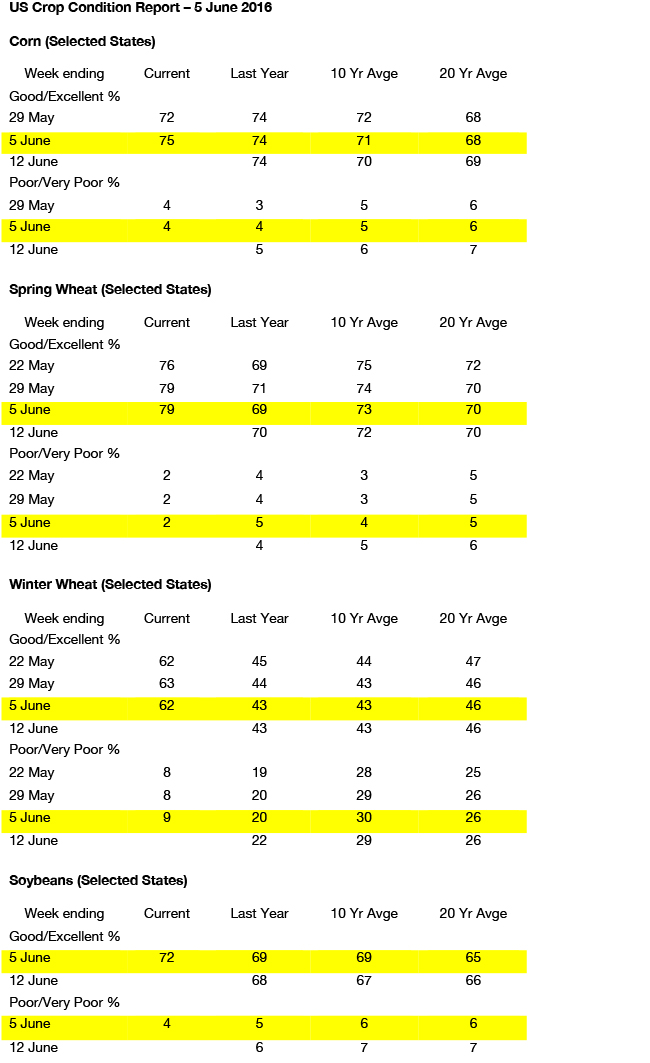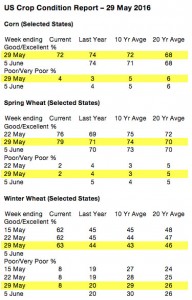- The USDA has today released its weekly export figures as detailed below:
Wheat: 223,800 mt, which is within estimates of 100,000-550,000 mt.
Corn: 1,679,200 mt, which is above estimates of 1,100,000-1,500,000 mt.
Soybeans: 1,234,000 mt, which is above estimates of 800,000-1,200,000 mt.
Soybean Meal: 181,000 mt, which is within estimates of 175,000-420,000 mt.
Soybean Oil: 22,100 mt, which is within estimates of 10,000-50,000 mt.
- Brussels has issued weekly wheat export certificates totalling 395,005 mt, which brings the season total to 30,956,198 mt. This is 1.923 million mt (1.91%) behind last year.
- In outside markets we have seen a stronger US$, op 0.5% and near the week’s high, and crude oil off $0.75/barrel, which has perhaps stemmed some of the recent enthusiasm that has prevailed in Chicago. However, 60 cent gains in new crop soybeans in less than a week cannot be described as a non-event by any stretch of the imagination!
- We have seen variable fundamental input today with US weather forecasts improving noticeably although there corn belt remains rather wet through next week. Soybean and corn export data (above) was better than expected and Brazil’s CONAB confirmed further cuts in yield to both corn and soybean crops. Wheat led the way lower early today on what we fundamentally believe to be a story that lacks any bullishness.
- CONAB lowered its Brazilian corn production estimate nearly 4 million mt to 76.2 million. This is a bit lower than expected, but close to many private trade estimates. Brazil’s exportable surplus is estimated at 23-24 million mt, which is still sizeable but compares to the USDA’s 26 million. Brazil’s shortfall is in part responsible for the recent boost in US sales. Soybean production was pegged at 95.6 million mt, vs. 96.9 last month and 96.2 a year ago. Brazilian soybean basis and ship lineup data suggests Brazil is nearly sold out, and that farmers will be reluctant to sell whatever remains of their crop. On the flip side, the earlier than expected end to Brazil’s soybean loading program will allow corn exports to begin smoothly in mid/late summer. The Brazilian government looks to auction off reserve corn to help livestock operations, but the Brazilian corn market is expected to loosen substantially. The safrinha harvest will be ongoing into August. Argentine harvest progress and yield updates will be released after the close tonight and the soybean harvest progress is expected to reach 85-88% complete with corn harvest estimated at 33-35%.
- US cash basis prices were weaker yesterday with farmers both good and willing sellers on the rally. We have stocks and seeding updates due at the end of the month and markets are far from decided upon actual weather models, conditions and patterns into July/August although the perceived potential for heat and dryness will doubtless linger until disproved. Our view continues to have the large global stockpiles that continue to overhang current S American and US new crop supplies amid a mediocre demand pattern. Weather remains a non-threat in the US into late June when we will start to see the key corn pollination period starting in the Delta, SE and S Midwest.






